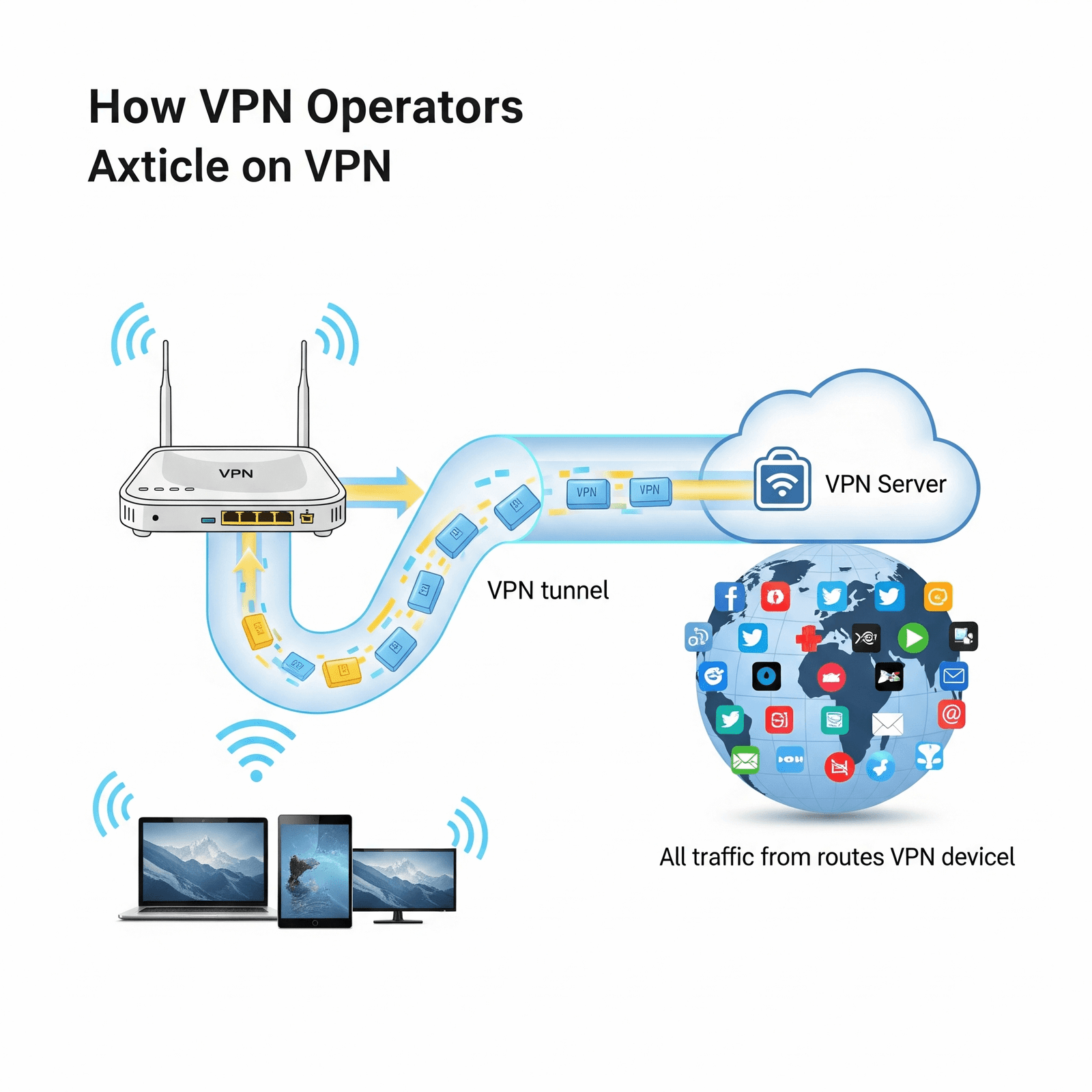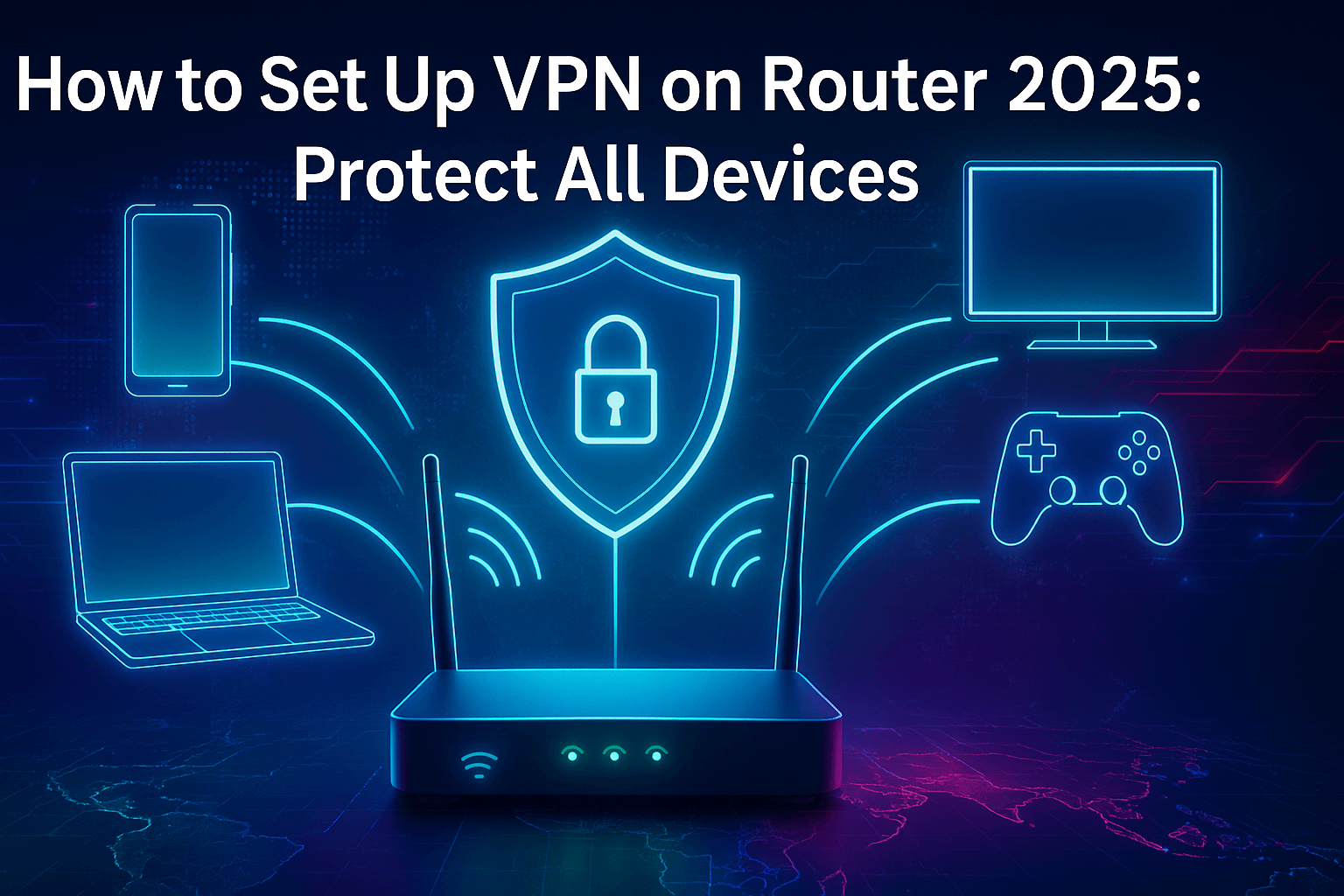In 2025, our homes are bustling hubs of connectivity, teeming with devices—smartphones, intelligent TVs, gaming consoles, and countless IoT gadgets. Ensuring comprehensive digital security and privacy for this ever-expanding ecosystem has become an absolute imperative. While individual VPN applications offer device-specific protection, integrating a Virtual Private Network (VPN) directly onto your home router presents a superior, “set-it-and-forget-it” solution. This powerful approach blankets every single device connected to your Wi-Fi network with robust security and privacy. This guide will walk you through the profound advantages of a router VPN, detail the essential components required for setup, and outline the general steps to achieve a truly secure and private home network.

The Router VPN Advantage: A Blanket of Security for Your Connected Home
Implementing a VPN directly on your router extends a comprehensive shield of security and privacy across your entire household. This method offers several distinct and compelling benefits over managing individual VPN apps on each device:
- Universal Device Protection: Once configured, every device that connects to your router’s Wi-Fi network automatically inherits the VPN’s encryption and IP address masking. This includes devices that typically lack native VPN app support, such as smart TVs, gaming consoles (PlayStation, Xbox, Nintendo Switch), and various Internet of Things (IoT) gadgets.
- Circumventing Connection Limits: Most VPN providers impose a cap on the number of simultaneous connections allowed per subscription. A router VPN elegantly bypasses this by counting as just one connection, effectively enabling you to protect an unlimited number of devices within your home network without hitting those frustrating limits.
- Always-On, Effortless Security: Your entire home network benefits from continuous protection as long as your router remains powered on. This eliminates the need to manually activate the VPN on each individual device, providing constant peace of mind.
- Extending Privacy to Guests: Any visitor connecting to your home Wi-Fi network will automatically be routed through the VPN, extending the same level of privacy and security to them without requiring any software installation on their part.
- Unlocking Global Content: Access a world of geo-restricted streaming libraries, online services, and websites on any device connected to your router, irrespective of its operating system or native capabilities.
- Thwarting ISP Throttling: Your Internet Service Provider (ISP) will be unable to monitor your online activities. This prevents them from intentionally slowing down your connection based on your usage patterns, such as extensive streaming, gaming, or torrenting.
Before You Begin: Essential Preparations for Router VPN Setup
Prior to embarking on the router VPN setup process, ensure you have the following prerequisites in place:
1. A VPN-Compatible Router: The Right Hardware
It’s crucial to understand that not all routers possess the necessary capabilities to support VPN client software. You will require a router capable of running VPN client firmware. Common categories include:
- DD-WRT or OpenWRT Compatible Routers: These open-source firmwares offer extensive customization options, crucially including robust VPN client support. Many popular router models can be “flashed” with these alternative firmwares.
- Routers with Native VPN Client Functionality: Certain high-end router models from reputable brands like Asus, Netgear, TP-Link, and Linksys come equipped with built-in VPN client support, significantly simplifying the setup process.
- Pre-Flashed VPN Routers: For ultimate convenience, you can purchase routers that arrive pre-configured with compatible VPN firmware, ready for immediate use.
2. A Premium VPN Subscription: Your Service Provider
You will need an active subscription from a reputable VPN provider that explicitly supports router configurations. When choosing a provider, look for those that offer:
- OpenVPN or WireGuard Support: These are the most prevalent, secure, and efficient protocols for router VPN implementations.
- Comprehensive Router Setup Guides: Leading VPN services typically provide detailed, step-by-step instructions tailored for a wide array of router models and firmwares.
- Exceptional Speeds and a Broad Server Network: These attributes are paramount for ensuring a smooth and responsive online experience across all your connected devices.
Step-by-Step: General Procedure for Router VPN Configuration
While the precise steps will vary considerably based on your specific router model and chosen VPN provider (always consult their dedicated guides!), here’s a generalized overview of the setup process:
- Confirm Router Compatibility: Double-check that your router model is indeed compatible with VPN client software (e.g., DD-WRT, OpenWRT, or native VPN client functionality).
- Acquire VPN Configuration Files: Log into your VPN provider’s website and download the necessary configuration files. These are typically .ovpn files for OpenVPN protocol. You will also need your VPN account’s username and password.
- Access Your Router’s Administration Panel: Open a web browser on a device connected to your router’s network. Type your router’s default IP address (commonly 192.168.1.1 or 192.168.0.1) into the address bar and log in using your router’s administrative credentials.
- Locate VPN Client Settings: Within your router’s web interface, navigate to the section specifically related to VPN, VPN Client, or Services.
- Upload Configuration / Input Details:
- For routers supporting .ovpn files: Simply upload the previously downloaded configuration file.
- For manual setup: Carefully input the VPN server address, select the appropriate protocol (OpenVPN, WireGuard), specify the encryption type, and enter your VPN account credentials.
- Save and Apply Changes: After meticulously entering all the required details, save your configurations and apply them. Your router may initiate a reboot process.
- Verify VPN Connection: Once the router has successfully rebooted, check its status page within the admin panel or visit your VPN provider’s website to confirm that the VPN connection is actively established. As an additional verification, access a “What’s my IP” website on any device connected to your router’s Wi-Fi to ensure your public IP address has indeed changed.
Premier VPNs for Seamless Router Integration
When choosing a VPN specifically for router integration, consider these top-tier providers, recognized for their exceptional router compatibility and robust performance:
- ExpressVPN: Stands out by offering custom firmware for a selection of routers, making the setup process incredibly user-friendly. It delivers excellent speeds and boasts an expansive global server network.
- NordVPN: Provides comprehensive manual setup guides for a wide variety of routers and offers strong OpenVPN support. It’s highly regarded for its robust security features and the efficient NordLynx protocol.
- Surfshark: An outstanding value proposition with unlimited simultaneous connections, making it ideal for protecting numerous devices via a single router setup. It supports OpenVPN and WireGuard on routers and provides extensive setup tutorials.
- Proton VPN: A strong contender for privacy-conscious users, featuring formidable encryption and excellent router compatibility, complete with detailed guides for DD-WRT and OpenWRT firmwares.
Troubleshooting Your Router VPN: Common Hurdles and Solutions
While setting up a router VPN is generally straightforward, you might occasionally encounter minor issues. Here are common challenges and their practical solutions:
- Addressing Slow Speeds: Try connecting to a VPN server geographically closer to you. Experiment with switching between different VPN protocols (e.g., from OpenVPN to WireGuard, if available). Ensure your router’s hardware is sufficiently powerful to handle the encryption overhead.
- Resolving Connection Drops: Verify the stability of your underlying internet connection. Ensure your router’s firmware is updated to the latest version. Some VPNs offer “keep-alive” settings that you can adjust to maintain a more stable connection.
- Setup Difficulties: Router interfaces can be complex. Always meticulously double-check your VPN provider’s specific setup guide tailored for your exact router model. If you remain stuck, do not hesitate to contact their customer support for expert assistance.
- Router Incompatibility: If your router fundamentally lacks native VPN client functionality, you may need to consider flashing it with custom firmware (such as DD-WRT) or, as a last resort, investing in a new VPN-compatible router.
Conclusion: An Unbreakable Digital Fortress for Your Home
In 2025, establishing a VPN on your home router represents a strategic investment in the comprehensive digital security and privacy of your entire connected ecosystem. It delivers always-on protection, effortlessly bypasses device connection limits, and ensures that every Wi-Fi-enabled device in your household is shielded from online threats and pervasive surveillance. While it may require a slightly more involved initial setup compared to individual device applications, the long-term benefits of a router-wide VPN are immeasurable, providing a truly secure, private, and unrestricted online experience for everyone under your roof.
For more specific device protection, check out our guides on Best iPhone VPN or VPN for Android.
Published on: July 2, 2025

